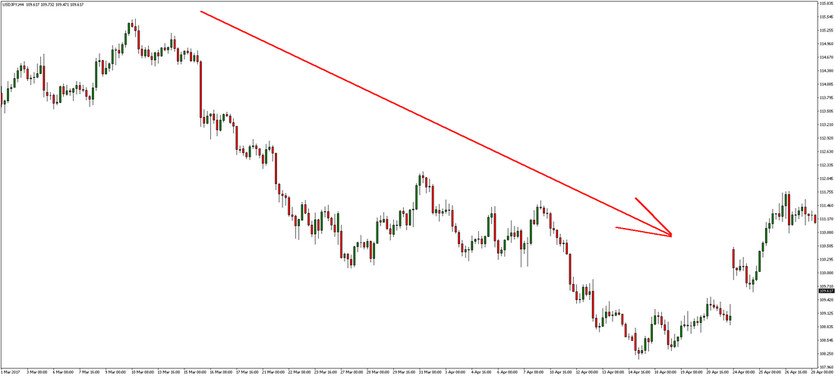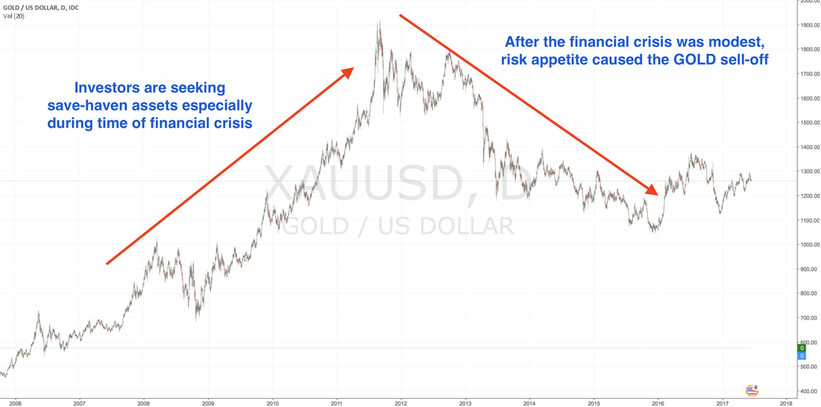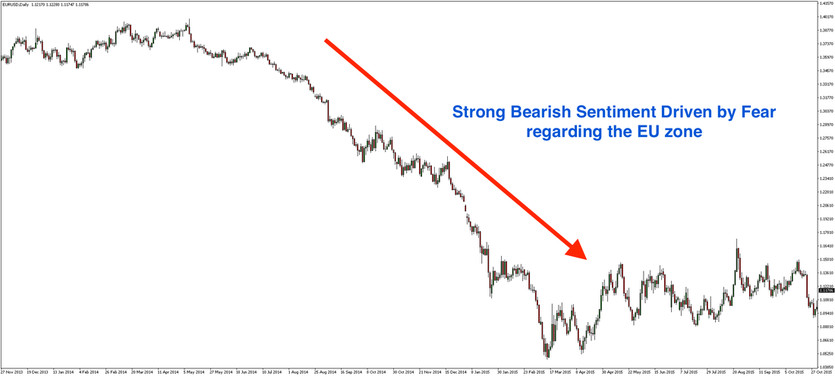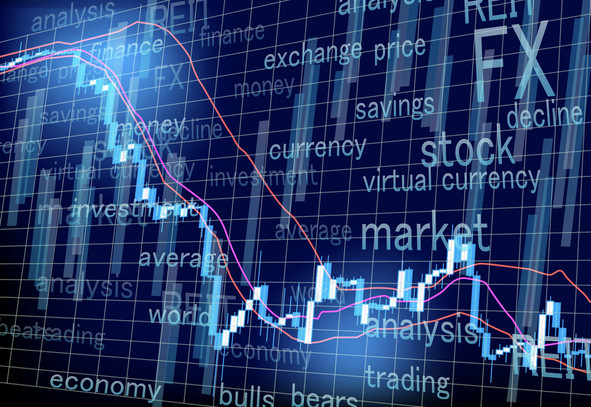Although longer-term shifts in the Forex market are mainly driven by a complex set of fundamental factors, in the near-term, the market can often react to other things as well, such as market sentiment and intraday technicals.
Sentiment-driven price swings are generally short-lived, and yet, ignoring this factor can be the cause for frequent and non-neglectable losses.
So, what exactly is this elusive concept of market sentiment in Forex trading?
Understanding Market Sentiment:
In simple terms, sentiment is the overall group mood of investors at a given point in time. If used correctly, sentiment can help traders execute their trades with striking precision, avoid bad trades and generally increase the number of winning trades.
More precisely, sentiment is the collective opinion of the big sharks (investors with huge capital that can actually move the market by the number and volume of trades they execute). The size of the Forex market is very large hence the opinions of the retail crowd matter far less than in other smaller markets.
This is why it’s important to keep an eye on the mood of institutional traders and investors by staying up to date on the latest news that move the market.
In order for a trader to be and to remain successful in this business, it is important that he is able to understand and tune in to the market sentiment, which is always either in favor or against any particular currency at a given point in time.
This is called sentiment analysis and it acts as an important tool in a professional trader’s arsenal. It is a mean of measuring the emotional and psychological state of the market participants.

Strong Bearish Sentiment driven by risk appetite and USDJPY vs. US bond yields correlation
How to Use Sentiment in Forex Trading?
The market sentiment changes direction quickly, usually after one or several surprising economic reports. However, a change in the sentiment doesn't automatically mean that fundamentals have changed and this particularly provides an excellent trading opportunity to enter a trade at a better price.
Often, the sentiment driven move will be just a retracement of the larger fundamentally-driven trend and it’s only a matter of time before sentiment reverses and turns in the same direction as the fundamentals in which case very sharp price changes happen very quickly.
Understand the Direction of Risk:
Practically, sentiment can be measured and analyzed in different ways. A good starting point is to understand the direction of risk in the market.
The risk mood in trading can be generally categorized in two ways:
When a risk appetite sentiment is dominant in the market, in essence, it means that traders are in the mood of buying riskier assets and high-yielding currencies like stocks and the New Zealand Dollar while selling low yielding currencies and safe-haven assets like the Japanese Yen and Gold at the same time.
On the contrary, when risk aversion takes over the main stage, traders will be closing out risk-seeking trades and as a result, violent corrections can occur. Regardless of the reasons for the heightened risks in markets, safe-havens often record huge gains during such times with the Japanese Yen and Gold being the usual winners.

Scan for Potential Fears:
Fear is always a stronger emotion than greed and as a result, risk-off market moves driven by fear are more often than not much more brutal than risk appetite trends which tend to be much slower, but much steadier also.
Being aware of the current risk environment in the market is certainly one of the key metrics for trading the FOREX market profitably. Staying updated on political developments around the world and especially on countries which currencies you trade is an important component to determining the risk on – risk off mood in the market.
The importance of this concept is highlighted by the fact that a sudden rise in the risk-off sentiment can very quickly erase months of gains in risky assets and high-yielding currencies.

Understand the Data Sources:
Your next door neighbor saying something about Europe’s financial policy is unlikely to have a big impact on the market or the Euro compared to if such news and opinions are brought by a credible sources like Bloomberg or Reuters.
In this sense, developing a shortlist of industry leading sources of financial data and Forex market news is an important part of a trader’s job.
Scanning for related important news and the latest developments in markets periodically, preferably several times per day, is a common habit among profitable traders.
News sources can include financial magazines, online news sources related to the Forex market, authentic Facebook and Twitter accounts of key people in the forex industry, newspapers and so on.
Keyword List:
Develop your own set of keywords. This helps in the classification of available news and filters them according to desired currencies and currency pairs. If available, you can also add keywords in your trading platform in order to get the latest news related to matters that are important to you.
So for example, if you are trading the EURUSD pair you could use keywords like Euro, Dollar, USD, EURUSD, Fed, ECB, FOMC etc.
You can add keywords to stay updated on pretty much anything that can affect the exchange rate of this pair you are interested in.
Data Collector:
Another useful practice is to use a data collector for professional trading. Each news, either positive, negative or neutral, is given a score and inputted in the data collector software which can later be used to understand the overall sentiment of the market.
Rather than keeping track of all the information in your head, having the big picture right in front of you, and on demand, can be extremely helpful and far less energy consuming to stay on top of the gazillion things that are happening every day and consequently affect the Forex market.





